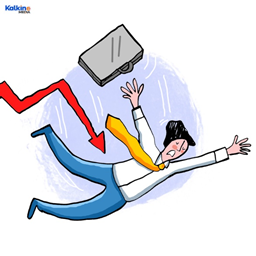What is High-Low Index?
The high-low index also called as a breadth indicator refers to an index that used to track the stocks that are touching their 52-week highs with the stocks that are striking their 52-week lows. The high-low index is used by a trader or investor in order to authenticate the trend of the prevailing market of a large market index.
The high-low index is also used in analysis of charts, technical analysis, and in analyzing the past stock data to estimate the index or market’s direction, whether the market will rise and fall. The high-low index is also defines as a tool to measure strength and weakness of an index.
Summary
- The high-low index is also called as a breadth indicator, which refers to an index that used to track the stocks that are touching their 52-week highs with the stocks that are touching their 52-week lows.
- The high-low index is used as a trading indicator and represents the past data because it undertakes a simple moving average of the new lows and new highs from the Record High Percent.
- The high-low index is depends on the calculation of Record High Percent, additionally the high-low index helps to understand the index trend through the Record High Percent’s simple moving average.
Source: Copyright © 2021 Kalkine Media
Understanding High-Low Index
The high-low index is used as a trading indicator and represents the past data because it undertakes an elementary fluctuating average of the new lows and new highs from the Record High Percent. An old aphorism says that future returns cannot be specified by the past returns. The high-low index can be a beneficial tool to gauge the relative power of an underlying index, though it is used as a technical indicator of trading that would make caution signs of buying and selling by assuming the market is not weak form efficient and can produce opposite results. The simple market efficiency theory is based on most efficient to least efficient and is based on assumption market efficiency. It consists of three levels: strong form efficiency, weak form efficiency, and semi-strong form efficiency.

Copyright © 2021 Kalkine Media
The high-low index depends on the calculation of Record High Percent. Additionally, the high-low index helps to understand the index trend through the Record High Percent’s simple moving average. Generally, a simple moving average is a 10-day Record High Percent’s moving average, although the period more than 10 days can also be considered.
The Record High Percent’s average is used to easy the moments of high irregularity in the index being examined. Sometimes, the high-low index is measured on the indices, which are representative of the whole market such as the Russell 2000, NASDAQ 100, and so on.
Frequently Asked Questions
What to calculate High-Low Index?
The High-Low Index calculation is an extremely fragile, which looks like an indicator of momentum 8’to find out extensive market conditions. The High-Low Index helps to measure the current difference of high’s with the low from an opted period of time in the past. In simple words the high-low index is a 10 days moving average of the record high percent indicator that separate new highs through new highs and adding new lows. The record high percent indicator can be calculated by using the given equation as follows:
Record High Percent = New Highs / New Highs + New Lows × 100
In order to calculate a high-low index, a simple average of 10 days or more from an opted period of time in the past should be computed after the calculation of the Record High Percent. In order to gets clearer and understandable underlying index’s trend through a simple moving average. To get the Record High Percent’s simple moving average of a 10-day period, the total of past 10 days of the Record High Percent must be divided by 10. The high-low index is considered as a moving average because with the ending of each day, the past back examination is eliminated from the calculation and most recent or new examination is added.
Traders and Investors contemplate a high-low index to be buoyant in the case of positive and increasing high-low index, and weak in the case of negative and decreasing high-low index. After all, the high-low index could be inconstant on a daily basis in order to smoothen out the day-to-day swings; a moving average is usually applied by the market technicians that help in generating more consistent and trusted signals.
What does the High-Low Index interprets?
The high-low index interprets the performance of the underlying index. The index is used by traders or investors to interpret if the underlying index is bullish and performing well, or in a bearish state and performing badly. The investors and traders look to the level of the high-low index in order to understand the relevant scenario as the high-low index is the Record High Percent‘s average that is calculated by considering new highs to new highs and lows.

Copyright © 2021 Kalkine Media
If the high-low index is more than 50 that represent more stocks are touching 52-week highs in the comparison of touching 52 lows. On the contrary, if the high-low index is less than 50, its represents that more stocks are reaching 52-week lows in the comparison of stocks reaching 52-week highs. Therefore, we can say that the traders and investors are usually in bullish state if the high-low index increases more than 50, and in bearish state if the high-low index decreases below 50. Generally, if the high-low index is more than 70, then it represents that the market is trending higher, conversely if the index below 30, it shows that the market is in downtrend.
 Please wait processing your request...
Please wait processing your request...